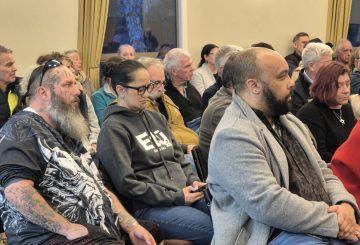Chính phủ đã công bố ngân sách lớn nhất từ trước đến nay cho Pharmac, cơ quan mua thuốc, trong lịch sử của nó. Trong bốn năm tới, gần 6,3 tỷ đô la sẽ được chi tiêu, theo Phó Bộ trưởng Y tế David Seymour. Ngân sách mới này giải quyết khoản thiếu hụt 1,7 tỷ đô la do chính phủ Lao động trước đó để lại.
Chính phủ cũ đã phân bổ 180 triệu đô la hàng năm cho Pharmac, nhưng chi phí thực tế để duy trì ngân sách của cơ quan là hơn 400 triệu đô la mỗi năm. Việc tài trợ thiếu hụt này đe dọa sẽ hạn chế khả năng tiếp cận dịch vụ chăm sóc sức khỏe quan trọng cho người New Zealand bằng cách buộc Pharmac loại bỏ một số loại thuốc khỏi danh sách của mình.
Một kế hoạch cải cách mô hình tài trợ của Pharmac là một phần của thỏa thuận liên minh giữa ACT và National. Cả New Zealand First và National đều đồng ý tăng nguồn tài trợ cho Pharmac hàng năm. Trong chiến dịch tranh cử, lãnh đạo đảng Lao động Chris Hipkins tuyên bố rằng tài trợ của Pharmac đã tăng lên 1,2 tỷ đô la một năm trong nhiệm kỳ của ông.
Tuy nhiên, hiện có hơn 130 phương pháp điều trị trong danh sách mong muốn của Pharmac mà nó muốn tài trợ nhưng không thể do hạn chế ngân sách. Tháng 8 năm ngoái, các bác sĩ ung thư đã viết một lá thư ngỏ cho Pharmac yêu cầu tài trợ tốt hơn cho các loại thuốc mới hơn, nói rằng New Zealand hầu như không theo kịp danh sách thuốc thiết yếu của Tổ chức Y tế Thế giới.
Seymour nhấn mạnh rằng tài trợ cho thuốc là vấn đề sống chết đối với một số người New Zealand. Ông cho biết chính phủ cam kết tìm thêm 1,774 tỷ đô la để đảm bảo rằng tất cả người dân New Zealand có thể tiếp cận các loại thuốc mà họ cần.
Seymour cũng đề cập đến các sáng kiến khác, chẳng hạn như việc trả lại thuốc cảm lạnh và cúm pseudoephedrine và hợp lý hóa các quy trình phê duyệt của Pharmac. Ông tuyên bố rằng cựu phó thủ tướng Paula Bennett sẽ trở thành chủ tịch hội đồng quản trị của Pharmac vào tháng tới. Chủ tịch trước đó, Steve Maharey, đã từ chức vào tháng 12.





























































